Make an appointment
Multispeciality Ayurveda Treatment
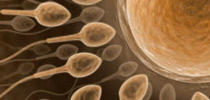 Ayurveda has developed a special branch to deal with such problems, known as Vajeekarana. Vajeekarana means to make one potent like a Vaji- A Horse!! Every ancient science of the world used horses as symbol of the reproductive powers. According to Ayurveda, conception takes place due to healthy sperm, healthy ovum, and a healthy uterus. For both men and women, reproductive health depends on the health of the Shukra Dhathu, or reproductive tissue. In women the Shukra tissue produces the ovum as part of the monthly cycle, and in men the semen is formed due to sexual stimulation.
Ayurveda has developed a special branch to deal with such problems, known as Vajeekarana. Vajeekarana means to make one potent like a Vaji- A Horse!! Every ancient science of the world used horses as symbol of the reproductive powers. According to Ayurveda, conception takes place due to healthy sperm, healthy ovum, and a healthy uterus. For both men and women, reproductive health depends on the health of the Shukra Dhathu, or reproductive tissue. In women the Shukra tissue produces the ovum as part of the monthly cycle, and in men the semen is formed due to sexual stimulation.
The Shukra Dhathu itself is created as part of a long chain of metabolic transformations, starting with the digestion of food and including the transformation of food to nutrient fluid, blood, muscle, fat, bone, bone marrow and finally, to Shukra tissue. Healthy Shukra Dhathu, then, according to
Ayurveda, depends on the health of all the other tissues in the body.
Ayurveda explains that proper climate( Rhtu), Field( Khetra) , Water( Ambu) and Seed( Beeja) is needed for the growth of a new crop , like the same as for the formation of a healthy embryo.
Treatment for Infertility, Polycystic Ovarian Syndrome, Endometiosis, Fallopian tubal blocks, fibroid uterus, Ovarian cysts, Stress Oligospermia (Less sperm count), Asthenospermia (Less motility of sperms) etc. Specialized gynecological Panchakarma treatments like Uttarbasti, Basti, Nasya, Yonidhavana, Yonipichu are done at out Hospital.
 In Ayurveda, obesity is known as Medarog, which is caused by the aggravation of Kapha. Kapha is an Ayurvedic humor which is dense, heavy, slow, sticky, wet and cold in nature. It governs all structure and lubrication in the mind and body apart from controlling weight and formation of all the seven tissues - nutritive fluids, blood, fat, muscles, bones, marrow and reproductive tissues.
In Ayurveda, obesity is known as Medarog, which is caused by the aggravation of Kapha. Kapha is an Ayurvedic humor which is dense, heavy, slow, sticky, wet and cold in nature. It governs all structure and lubrication in the mind and body apart from controlling weight and formation of all the seven tissues - nutritive fluids, blood, fat, muscles, bones, marrow and reproductive tissues.
In a balanced state, Kapha gives nourishment to these tissues through various micro channels. However, when it is aggravated, Kapha leads to production of toxins in the body. These toxins are heavy and dense in nature and accumulate in weaker channels of the body, causing their blockage. In the case of an obese person, toxins accumulate in Medovahi Srotas (fat channels), thereby leading to an increase in the production of fat tissue (Meda Dhatu). When the body produces more fat tissues, it causes an increase in weight.
The Ayurvedic line of treatment for obesity begins with the pacification of Kapha Dosha. This can be done by eliminating Kapha-aggravating foods from the diet. Next, the treatment also focuseWhen body weight or the body inches increases the subsequent tissues- bone,bone marrow and reproductive tissues will not get proper nourishment which leads to joint pain, degeneration of bone and difficulty in copulation etc.s on cleansing of the Medovahi channels through cleansing herbs so that excess weight and adipose tissue settled in the body can be reduced.
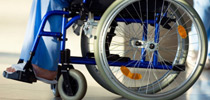 Paralysis is most often caused by damage in the nervous system, especially the spinal cord. Other major causes are stroke, trauma with nerve injury, poliomyelitis, botulism, spina bifida, multiple sclerosis, amyotrophic lateral sclerosis (ALS), bell's palsy, muscular dystrophy, cerebral palsy and Guillain-Barré syndrome.
Paralysis is most often caused by damage in the nervous system, especially the spinal cord. Other major causes are stroke, trauma with nerve injury, poliomyelitis, botulism, spina bifida, multiple sclerosis, amyotrophic lateral sclerosis (ALS), bell's palsy, muscular dystrophy, cerebral palsy and Guillain-Barré syndrome.
The disease has been discussed in Ayurveda under Vata vyadhi disorder. The terms Paksaghata, Paksha Vadha and Ekanga Vata have been used to describe Paralysis in Ayurveda. Ayurveda has mentioned facial paralysis as a separate disease entity called "Ardita vata".
According to ayurveda Paralysis is caused due to 2 reasons and one is Kevala Vataja and other is Kaphanubhandha which may be due to Clot formation or Heomorrhage.
The one and only hospital that have special treatment for Paralysis, where we treat on the root cause of disease manifestion and not on the symptoms of the disease. We treat also Multiple sclerosis, one side paralysis, Upper motor neuron Leision, TB of spine and brain, genetic disorders, bone and joint disorders, immobility due to tendon-ligament injuries and disorders, traumatic paralysis, facial paralysis and paralytic conditions of all age groups.
 Hyperthyroidism or thyrotoxicosis: in which the gland secretes excess of hormones. This condition is more common in women than in men whose age ranges from 30 to 50 years. Thyrotoxit individuals become tremulous, irritable, anxious and even hysterical. Because the metabolism is raised, they experience rapid heart rate and palpitation, rapid shallow respiration. Frequent bowel motions and diarrhea, Flushing, heat intolerance, sweating, menstrual disturbance and sometimes bulging of the eyes. Such people suffer the paradoxical situation in which they feel fatigue and lack of energy and yet are compelled to move about, talk and do things. They are constantly fidgeting and the slightest remark may set off an inappropriately angry response.
Hyperthyroidism or thyrotoxicosis: in which the gland secretes excess of hormones. This condition is more common in women than in men whose age ranges from 30 to 50 years. Thyrotoxit individuals become tremulous, irritable, anxious and even hysterical. Because the metabolism is raised, they experience rapid heart rate and palpitation, rapid shallow respiration. Frequent bowel motions and diarrhea, Flushing, heat intolerance, sweating, menstrual disturbance and sometimes bulging of the eyes. Such people suffer the paradoxical situation in which they feel fatigue and lack of energy and yet are compelled to move about, talk and do things. They are constantly fidgeting and the slightest remark may set off an inappropriately angry response.
Hypothyroidism : here the thyroid is underactive, producing too little thyroid hormone. This condition is far more common than hyperthyroidism and can be caused by iodine deficiency or thyroid failure brought on by pituitary dysfunction, inflammation, and scarring. By far the majority of cases are mild or borderline, unrecognized by the medical establishment. Yet these mild cases can be the cause of vague, but persistent, disorders such as fatigue, depression, loss of vitality, and overall hormonal imbalance. More severe problems from hypothyroid are the result of failure to develop properly, such as cretinism and juvenile myxodema. Long term hypothyroidism, such as adult myxodema, which is characterized by swelling of skin and subcutaneous tissues; dry, cold and slightly yellow skin, puffy face, loss of eyebrows, anginal pain, bradycardia, anorexia, constipation, and anemia.
According to Ayurveda patient shows Rasa Dhata Vriddhi Kshaya Laxanas in the body.
 A pervasive developmental disorder of the brain functions, prevents a child from organizing and understanding information. It affects social interactions. Autistic disability is due to disharmony and de-regulation at the level of brain, medha and mind. Any disability due to imbalance at energy level can be treated by rays and radiation therapy. The deranged rhythm at medhas level can be corrected at sound and vibration level. Biochemical imbalance can be treated at Dravya (drug) level and the behavioral imbalance can be treated at practice level (through specialized education). Since autism spectrum is the state of imbalance due to deregulation of body –brain and the life forces, this state of imbalance can be identified in four states:-(i) Anatomical abnormalities of naisargika nature (natural phenomena due to genetic or accidents).
A pervasive developmental disorder of the brain functions, prevents a child from organizing and understanding information. It affects social interactions. Autistic disability is due to disharmony and de-regulation at the level of brain, medha and mind. Any disability due to imbalance at energy level can be treated by rays and radiation therapy. The deranged rhythm at medhas level can be corrected at sound and vibration level. Biochemical imbalance can be treated at Dravya (drug) level and the behavioral imbalance can be treated at practice level (through specialized education). Since autism spectrum is the state of imbalance due to deregulation of body –brain and the life forces, this state of imbalance can be identified in four states:-(i) Anatomical abnormalities of naisargika nature (natural phenomena due to genetic or accidents).
Our Therapies and behavioral interventions are designed to remedy specific symptoms and can bring about substantial improvement. The holistic treatment plan coordinates therapies and interventions that target the core symptoms of autism.
Ayurvedic Care Protocol includes:
1. Dosha balancing especially Agni element by improving the absorption in the digestive system.
2. Purification and rejuvenation of dhatus by expelling the metabolic waste( dosha nirharana ) from the body.
3. Administration of scientifically verified Medhya Rasayana, which goes after blood brain barrier and nourishes the brain
4. Sensible Ayurvedic diet and exercises for proper digestion and oxygen supply to the brain. and
5. Adjuvant supportive therapy based on Multi-Dimensional approach to increase the grasping power (Dhi), Differentiation power (Dhrith) and Memory or intellectual power(Smrithi).
Panchakarma procedures like Matra Vasti, Shiro Vasti, Thalapodhichil, Ksheera Dhara, Thaila, Shiro Dhara are effectively done at our hospitals.
 Muscular dystrophy (MD) is a genetic disorder that weakens the muscles. A person suffering from MD has incorrect or missing information in his genes, which prevents formation of the proteins which are necessary for the healthy development of muscles.
Muscular dystrophy (MD) is a genetic disorder that weakens the muscles. A person suffering from MD has incorrect or missing information in his genes, which prevents formation of the proteins which are necessary for the healthy development of muscles.
Ayurvedic approach using scientifically verified herbs, diet and Yogic support show strong evidence of substantial benefit for children and adults with Neuro-muscular disability and muscular dystrophies. Ayurveda considers this condition as Mamsa-vata-kshaya related to Beeja dosha and impairments of Mamsagni (muscle enzyme). It involves deranged Vata and subsequent degeneration of muscles and structures related to it. Ayurvedic treatment slows or stop the progression of muscle degeneration. As part of treatment protocol ayurveda defines Mamsam – Mamsena Vardhathe (which means Muscles can be nourished using muscles).
A combined strategy of age - Mamsa Navara, Navara, Ksheera Dhara, Til-Mash Pinda sweda, Pizhichil, Anuvasana Vasti, Mamsagni Rasayana and Yogic support is effective in the long-term management of muscular dystrophies by nourishing the tendons and ligaments of body along with muscle tissues.
 According to Ayurveda, the skin has seven layers, located not only superficially but extending to the deeper levels of the body. A skin disease is, mostly, rooted deeply into various dhatus or tissues like fat, muscles, blood etc. Most skin treatments are generally external applications like creams or oils. These, however, never reach the deeper layers of the skin. As a result, the symptoms disappear temporarily, and the disease is not rooted out permanently.
According to Ayurveda, the skin has seven layers, located not only superficially but extending to the deeper levels of the body. A skin disease is, mostly, rooted deeply into various dhatus or tissues like fat, muscles, blood etc. Most skin treatments are generally external applications like creams or oils. These, however, never reach the deeper layers of the skin. As a result, the symptoms disappear temporarily, and the disease is not rooted out permanently.
Ayurveda always tries to root out the disease by treating it specifically according to its cause. As the disease is deep-seated it is difficult to fix the problem quickly. Ayurvedic skin treatments may take a few weeks to remove the symptoms but the diseases are treated permanently by doing Udwarthana,Pizhichil, Kashaya Dhara ,by opening up the channels and expelling the metabolic waste through the skin. And also Blood Letting using leech was also done to remove the stagnant blood over affected area.
Effective treatment are there in our hospital for Lichen Planus, Chronic Eczema, Chronic Urticaria, Acne Vulgaris, Skin Allergy.
 In Ayurveda, Diabetes is known as Madhumeha (Madhu means 'honey' and Meha means 'urine'). Medhumeha is categorized as Vataj Meha (a problem caused by aggravation of Vata). Vata is an Ayurvedic humor symbolizing wind and dryness. Deterioration of the body is a characteristic that indicates impairment of Vata. Maximum deterioration of dhatus (body tissues) occurs in this type of disease and this is the reason why all vital organs are affected by Diabetes.
In Ayurveda, Diabetes is known as Madhumeha (Madhu means 'honey' and Meha means 'urine'). Medhumeha is categorized as Vataj Meha (a problem caused by aggravation of Vata). Vata is an Ayurvedic humor symbolizing wind and dryness. Deterioration of the body is a characteristic that indicates impairment of Vata. Maximum deterioration of dhatus (body tissues) occurs in this type of disease and this is the reason why all vital organs are affected by Diabetes.
The other prime cause of Diabetes is impaired digestion. Impaired digestion leads to accumulation of specific digestive impurities (known as ama) which accumulate in the pancreatic cells and impair the production of insulin.
The treatment of Diabetes recommended in Ayurveda – as against modern medicine – is aimed at rejuvenating the body to not only balance sugar levels, but also foster a positive change in the patient's life. Ayurvedic medicines work on the root cause of the disease, strengthening the patient's immunity, enhancing digestion and helping him lead an overall healthy life. Along with medication, dietary and lifestyle changes are also recommended to rejuvenate the body's cells and tissues, allowing them to produce insulin properly.
As diabetic complication the disease effects 3 main vital points (3 Marmas) of body. They are Shiras(Head), Hrudaya (Heart) and Vasti (Urinary Bladder) - which causes Visual problems (Diabetic retinopathy) Memory loss, Psuedo hunger, Heart disease, Loss of sensation (Diabetic Neuropathy) and Kidney disorders, UrineIncontinence, Prostratic complaints ( Diabetic Nephropathy) along with chance of Non healing Ulcers and Gangrenes.
 Treatment of cancer by Ayurveda is very in-depth and holistic in its approach. Ayurveda treats the disease according to the specific nature of the patient, the aggravated body energies involved and the body tissues that are affected. Treatment does not only focus on the area of the malignancy but on the entire system, as the whole organism must be returned to harmony for the disease to be treated permanently and not recur elsewhere.
In ayurveda there are 8 main diseases( Ashta Maha Gadas) which is incurable, in that there is no Arbudha ( Cancer) mentioned , wwhich shows the curability of Arbudha( Cancer) through ayurveda. Our treatment is through making the patients biological rhythm is harmonized with the nature which slows or stops the progression of the disease by proper diet and regimen
The body must be purified of the toxins that cause the cells to attack the body. Treatment includes the administration of blood cleansing herbs along with the adoption of a detoxifying diet. Circulatory stimulant herbs are also prescribed to promote circulation, shift stagnation of the blood, increase the efficient elimination of toxins and assist in healing the tissues. Immunity restoring herbs and minerals are given to boost the strength of debilitated patients.
WE PROVIDE SUPPORTIVE, PALLIATIVE AND PROPHYLACTIC TREATMENTS FOR ALL TYPES OF CANCER. CANCER EARLY DETECTION & PREVENTION.
Treatment of cancer by Ayurveda is very in-depth and holistic in its approach. Ayurveda treats the disease according to the specific nature of the patient, the aggravated body energies involved and the body tissues that are affected. Treatment does not only focus on the area of the malignancy but on the entire system, as the whole organism must be returned to harmony for the disease to be treated permanently and not recur elsewhere.
In ayurveda there are 8 main diseases( Ashta Maha Gadas) which is incurable, in that there is no Arbudha ( Cancer) mentioned , wwhich shows the curability of Arbudha( Cancer) through ayurveda. Our treatment is through making the patients biological rhythm is harmonized with the nature which slows or stops the progression of the disease by proper diet and regimen
The body must be purified of the toxins that cause the cells to attack the body. Treatment includes the administration of blood cleansing herbs along with the adoption of a detoxifying diet. Circulatory stimulant herbs are also prescribed to promote circulation, shift stagnation of the blood, increase the efficient elimination of toxins and assist in healing the tissues. Immunity restoring herbs and minerals are given to boost the strength of debilitated patients.
WE PROVIDE SUPPORTIVE, PALLIATIVE AND PROPHYLACTIC TREATMENTS FOR ALL TYPES OF CANCER. CANCER EARLY DETECTION & PREVENTION.
 Decline in sexual performance due to psychological and physiological reasons are common to both the sex. The factors like stress, fatigue, anxiety, depression, ageing, cyclic changes, less hormonal production etc add to this problem. Sex has always been an issue of dichotomy. An integral part of our lives and essential for the continuation of the species, it is far more than just a technical necessity. Sex(Maidhuna) is said to be the one of the 3 pillars of life along with Food (Ahara) and Sleep (Nidra).
Decline in sexual performance due to psychological and physiological reasons are common to both the sex. The factors like stress, fatigue, anxiety, depression, ageing, cyclic changes, less hormonal production etc add to this problem. Sex has always been an issue of dichotomy. An integral part of our lives and essential for the continuation of the species, it is far more than just a technical necessity. Sex(Maidhuna) is said to be the one of the 3 pillars of life along with Food (Ahara) and Sleep (Nidra).
According to Ayurveda science of sexual function and reproduction is categorized under the nomenclature vajikaran. Ayurveda outlined only scientific and medical aspects of various sexual function and dysfunction. Ayurveda co-related sex medicine with rejuvenating or geriatric medicine and also both preventive as well as curative aspects of sexual problem. Ayurvedic treatment of sexual disorders is aimed at keeping the body energies balance by eating a balanced diet. Problems of stress and anxiety can be effectively dealt with rejuvenating herbs, yoga, meditation and counseling.
We treat for Premature Ejaculation, Erectile dysfunction, Loss of sexual desire or Libido, Menopause, Dysfunctional Uterine Bleeding, Dyspareunia, Semen Infection, Infertility, Night fall, Sexual debility, Azoospermia or oligospermia etc.
 Asthma is a disease of the human respiratory system in which the airways narrow, often in response to a trigger such as exposure to an allergen, cold air, excessive exercise or emotional stress. This narrowing causes symptoms such as wheezing, chest tightness, shortness of breath and coughing.
Asthma is a disease of the human respiratory system in which the airways narrow, often in response to a trigger such as exposure to an allergen, cold air, excessive exercise or emotional stress. This narrowing causes symptoms such as wheezing, chest tightness, shortness of breath and coughing.
Ayurveda regards Asthma as a disorder caused by impaired digestion. A malfunctioning digestive process causes hypersensitivity to certain substances, such as dust and pollen that triggers the asthma attacks. Deposits of ama (mucus) in the lungs and respiratory tract create obstruction in breathing and cause wheezing or coughing.
Ayurvedic treatment of asthma focuses on restoring digestion with herbal preparations and the right diet and lifestyle changes. The medicines primarily work on pacifying Kapha and cleansing toxins from the body. In addition, specific herbal combinations are also supplemented to boost the body's immunity. It also helps in dilatation of bronchioles and strengthening the intercoastal muscles and increases the lung capacity through treatments and exercises which gives a long term cure for these disease.
 Chronic Fatigue Syndrome is a condition in which sufferer keeps on feeling tiered for the whole day even without exerting. This condition is common in the females of age 30-50, generally but anyone can be a patient for this condition. This is a condition which affects not only the working capacity of a person but also will impact the social behavior of a person, because this condition of "always tired" brings a lot of irritation in behavior.
Chronic Fatigue Syndrome is a condition in which sufferer keeps on feeling tiered for the whole day even without exerting. This condition is common in the females of age 30-50, generally but anyone can be a patient for this condition. This is a condition which affects not only the working capacity of a person but also will impact the social behavior of a person, because this condition of "always tired" brings a lot of irritation in behavior.
Chronic fatigue syndrome is a condition, which resembles Vataj Jwara (the Jwara caused by Vata Dosha). Body Ache, Stiffness in body, Body pains specially in evening hours and before bed, Flatulence, constipation, not feeling well for the whole day are the common signs and symptoms of these two conditions.
Vataj Jwara is caused by the Vata vitiating diet and lifestyle, so this is the first step that you should have a proper knowledge about your Diet and Lifestyle according to your Doshas- once the main cause will be removed it will be easy to get rid of the problem. Treatment of Chronic Fatigue Syndrome in Ayurveda is aimed to rectify the digestive system first to control the disease.
 From the Ayurvedic point of view, most depression is a kapha imbalance that is the culmination of vata and then pitta going out of balance. Initially the brain's electrochemistry has an erratic overreaction (vata imbalance), which triggers a loss of enzymatic activity in the metabolism (pitta imbalance). Kapha responds by trying to glue everything down, bringing about heaviness, darkness, and stagnation that the mind-body interprets as the negative message of hopelessness and depression. In other words, because of specific etiological factors, vata from the colon, pitta from the intestine, or kapha from the stomach enters the general circulation and lodges in the nervous system, interferes with normal functioning of the mind and nervous system, and causes depression.
From the Ayurvedic point of view, most depression is a kapha imbalance that is the culmination of vata and then pitta going out of balance. Initially the brain's electrochemistry has an erratic overreaction (vata imbalance), which triggers a loss of enzymatic activity in the metabolism (pitta imbalance). Kapha responds by trying to glue everything down, bringing about heaviness, darkness, and stagnation that the mind-body interprets as the negative message of hopelessness and depression. In other words, because of specific etiological factors, vata from the colon, pitta from the intestine, or kapha from the stomach enters the general circulation and lodges in the nervous system, interferes with normal functioning of the mind and nervous system, and causes depression.
Sometimes depression is a pitta disorder. Allergies and the breakdown in metabolic processes they lead to disturb brain chemistry. This can cause dramatic mood swings, with depression as one of the consequences. Vata imbalance also can cause depression.
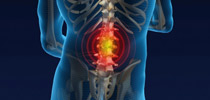 Ayurveda holds that low back pain is a result of vitiation of one of the three principal 'doshas'. 'Kateegraham'/'Prishtasoola' or low back pain is an indication of Vata aggravation and bone and muscle weakness.
Ayurveda holds that low back pain is a result of vitiation of one of the three principal 'doshas'. 'Kateegraham'/'Prishtasoola' or low back pain is an indication of Vata aggravation and bone and muscle weakness.
Treatment in Ayurveda is to bring the vitiated 'dosha' back to the state of equilibrium and thereby to the state of health. For treating low back pain, internal as well as external treatments are done. Herbal preparations like 'Asthavargam' are administered internally. Daily purgation is recommended to restore the vitiated 'dosha' to the state of normalcy.
Low back pain can result due to health problems like osteoporosis, scoliosis, spinal stenosis. Sprain or strain of muscles or ligaments in the area can also manifest in low back pain. Other possible causes include fibromyalgia and beginning or malignant tumours. A fall or blow to the back can strain or tear tissues around the spine, or even break a bone leading to back pain. Lack of exercise or incorrect exercise can also lead to low back pain. Too much weight or overweight also is a cause of low back pain.
Ayurvedic Panchakarma treatments like Abhyanga (oil massage), Basti (meditated enema) are very much helpful in relieving backache and correcting abnormalities.
 Fibromyalgia is a recently recognized disorder that is regarded as a chronic condition associated with the experience of non-inflammatory pain and tenderness in muscles, ligaments , joints and fatigue. Fibromyalgia is a relatively common condition, estimated to affect about four percent of the general population.
Fibromyalgia is a recently recognized disorder that is regarded as a chronic condition associated with the experience of non-inflammatory pain and tenderness in muscles, ligaments , joints and fatigue. Fibromyalgia is a relatively common condition, estimated to affect about four percent of the general population.
It is very similar to Chronic Fatigue Syndrome (CFS); Only point of difference is presence of musculoskeletal pain in fibromyalgia and that of fatigue in CFS. Low level of Serotonin is considered to be most important biochemical criteria. The primary treatment goals should include raise serotonin levels, improve sleep quality, and assure adequate magnesium levels.
It can be described as 'Mansa Dhatugat and Mansavrut Vata' Fibromyalgia is perceived as a Vata imbalance. Vata is the main imbalance and Aggravated Vata destabilizes the nervous system and can create hypersensitivity leading to pain and tenderness. Accumulation of Ama (toxins) and shrotorodha are also contributory factors. The aggravation of Vata dosha and accumulation of Ama (toxins) are the primary causes and are treated mainly. Associated weak digestion, constipation, and effects of chronic stress are also tackled.
 Epilepsy or Apasmara in Ayurveda is a neurological disorder characterized by sudden recurring fits of seizures with or without loss of conscience. It is a neurological disorder which can occur either as a symptom of a brain disease or without any known pathology. An epileptic attack may range from mild episodes of progressive numbing of a part of the body to sudden involuntary contractions of the muscles.
Epilepsy or Apasmara in Ayurveda is a neurological disorder characterized by sudden recurring fits of seizures with or without loss of conscience. It is a neurological disorder which can occur either as a symptom of a brain disease or without any known pathology. An epileptic attack may range from mild episodes of progressive numbing of a part of the body to sudden involuntary contractions of the muscles.
It is generally characterized by 'clinical events' called seizures featured by instantaneous loss of memory with or without spasm of body (generalized or localized). Violent convulsions, twitching of the muscles, biting of the tongue, distorted fixation of thumb, rotation of the head etc are a few of the other symptoms seen in patients suffering from epilepsy. Factors like deprivation of sleep, high fever, use of alcohol, alcohol withdrawal, mental stress etc can trigger seizures.
According to Ayurveda, epilepsy is a result of the vitiation of the vata dosha which particularly affects the head. However, it can also be caused by vitiation of pitta or kapha. Sometimes external situations combine with internal doshas to cause this disease, but external events can never be the sole cause. It is described as Apasmara or apasmaram in Ayurveda.
 According to Ayurveda, Psoriasis or Mandal is caused by an imbalance in the Pitta Dosha. Pitta symbolizes fire and is heating in nature; it usually gets imbalanced due to faulty dietary habits and sedentary lifestyles. The imbalanced Pitta manifests in the skin and causes accumulation of ama or toxins. These toxins accumulate in body tissues such as rasa (nutrient plasma), rakta (blood), mansa (muscles) and lasika (lymph) and contaminate them, leading to skin conditions such as Psoriasis.
According to Ayurveda, Psoriasis or Mandal is caused by an imbalance in the Pitta Dosha. Pitta symbolizes fire and is heating in nature; it usually gets imbalanced due to faulty dietary habits and sedentary lifestyles. The imbalanced Pitta manifests in the skin and causes accumulation of ama or toxins. These toxins accumulate in body tissues such as rasa (nutrient plasma), rakta (blood), mansa (muscles) and lasika (lymph) and contaminate them, leading to skin conditions such as Psoriasis.
According to Ayurveda, most skin problems have deep-rooted causes that are often ignored. Therefore, use of local creams or antibiotics can only mask the symptoms; they do not provide long-term relief.
Treatment for Plaque psoriasis, Guttate psoriasis, Inverse psoriasis, Pustular psoriasis, Psoriatic arthritis, Nail psoriasis and Erythrodermic psoriasis are provided at our centers.
 Hypertension (known as Rakta Gata Vata in Ayurveda) is elevated pressure of the blood in the arteries. The increase in blood pressure depends upon a person's age, sex, physical and mental activities, family history, and diet. Normal blood pressure of a healthy adult individual is 120 mmHg systolic and 80 mmHg diastolic. Unhealthy diet and sedentary lifestyles are the chief causes of hypertension today. Most of the food items that we consume – fast foods or items packed with preservatives and chemicals – create digestive problems in the body. Impaired digestion leads to accumulation of ama (toxins), which further lead to the high blood pressure. The food we eat is digested by our digestive fire (jatharagni) to produce nutrient plasma. This plasma nourishes all other dhatus (body tissues) and aids in the production of healthy blood, which circulates all over the body through various channels (srotas).
Hypertension (known as Rakta Gata Vata in Ayurveda) is elevated pressure of the blood in the arteries. The increase in blood pressure depends upon a person's age, sex, physical and mental activities, family history, and diet. Normal blood pressure of a healthy adult individual is 120 mmHg systolic and 80 mmHg diastolic. Unhealthy diet and sedentary lifestyles are the chief causes of hypertension today. Most of the food items that we consume – fast foods or items packed with preservatives and chemicals – create digestive problems in the body. Impaired digestion leads to accumulation of ama (toxins), which further lead to the high blood pressure. The food we eat is digested by our digestive fire (jatharagni) to produce nutrient plasma. This plasma nourishes all other dhatus (body tissues) and aids in the production of healthy blood, which circulates all over the body through various channels (srotas).
According to Ayurveda, high blood pressure involves all the doshas, the heart, and the blood vessels. We can see signs and symptoms of derangement of vata dosha mainly that of 'Vyana vayu' in high blood pressure. The treatment is to correct the balance of vata dosha.Pitta visiation is also seen often and should be treated. People with Pitta and Vata predominance constitution and Pitta and Vata imbalance, are more prone to hypertension than any other. Unprocessed anger, frustration, irritability, anxiety and fear leads to mal-adaptation of the endocrine system, which then leads to conditions like hypertension. Treatment is based on bringing these imbalances back to normal. In the treatment of hypertension; nutrition, exercise, breathing exercises (Pranayama), yoga, meditation, behavioral modification along with various herbs and minerals are prescribed.
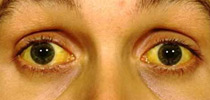 Increased intake of oily, spicy, sour, salty, alkaline, penetrating and very hot foods; alcohol; and sesame oil cause Pitta (Ayurvedic humor representing Fire) aggravation. The aggravated Pitta then impairs the blood and the muscle tissue of the liver, causing blockage in the channels of the liver and thus Pitta (in the form of bile) is thrown back into the blood leading to discoloration of the eyes and skin. Sleeping in the daytime, excessive physical work, overindulgence in sexual activity, suppressing the natural urges of the body, and psychological factors like lust, fear, anger, and stress can also be causative factors in cases of Jaundice.
Increased intake of oily, spicy, sour, salty, alkaline, penetrating and very hot foods; alcohol; and sesame oil cause Pitta (Ayurvedic humor representing Fire) aggravation. The aggravated Pitta then impairs the blood and the muscle tissue of the liver, causing blockage in the channels of the liver and thus Pitta (in the form of bile) is thrown back into the blood leading to discoloration of the eyes and skin. Sleeping in the daytime, excessive physical work, overindulgence in sexual activity, suppressing the natural urges of the body, and psychological factors like lust, fear, anger, and stress can also be causative factors in cases of Jaundice.
There is yellowish discoloration of the eyes, skin, mouth, and nails. Stool and urine are dark yellow or reddish reddish-colored. In obstructive jaundice, the stool is white-colored. Other symptoms can be indigestion, flatulence, weakness, lassitude, lack of appetite, burning sensation in the body, low-grade fever, drowsiness, loss of libido, excessive thirst, etc.
Ayurvedic treatment of Jaundice involves pacifying aggravated body energies using herbs that stimulate the function of the liver and increase the flow of bile in the bile duct. Digestion is also restored with the help of a customized diet plan to ensure efficient metabolism.
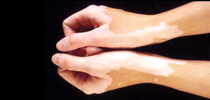 Leucoderma is the gradual loss of skin pigment, called melanin, from layers of the skin. White patches occur all over the body including face, scalp and genitals. According to Ayurveda, Leucoderma is caused due to the aggravation of Pitta Dosha. Pitta is an Ayurvedic humor which symbolizes heat or fire, and is manifested in the skin. Aggravated Pitta leads to accumulation of ama (toxins) in deep layers of the skin, leading to the condition of Leucoderma.
Leucoderma is the gradual loss of skin pigment, called melanin, from layers of the skin. White patches occur all over the body including face, scalp and genitals. According to Ayurveda, Leucoderma is caused due to the aggravation of Pitta Dosha. Pitta is an Ayurvedic humor which symbolizes heat or fire, and is manifested in the skin. Aggravated Pitta leads to accumulation of ama (toxins) in deep layers of the skin, leading to the condition of Leucoderma.
Pitta is of five types; one of them is Bhrajak Pitta that gives coloration to skin. In the case of Leucoderma, Bhrajak Pitta is in an imbalanced state, and therefore, the skin starts losing its color and white patches appear. Along with Pitta Dosha, deeper body tissues like Rasa Dhatu (nutrient plasma), Rakta (blood), Mansa (muscles), Lasika (lymph) are also involved in the disease.
Treatment consists of pacifying imbalanced body energies, cleansing the blood and administrating herbs that restore skin color. Poor digestion is the root cause of this disease, as it causes the build-up of toxins in the tissues. An essential part of treatment, therefore, is restoring digestion.
 Menstrual Problems may refer to the many different types of menstruation disorders, such as delay or absence of bleeding, painful cramping and profuse bleeding. According to Ayurveda, poor diet and inefficient digestion are the main causative factors for these disorders. Improperly digested food leads to the production of toxins in the body. These toxins are circulated by the blood to the deep tissues and channels, where they cause blockages and stagnation. These conditions cause aggravation of Vata Dosha (air) and the Rakta Dhatu (blood). The aggravated Vata brings impaired blood into the channels carrying the raj (menstrual blood), leading to increased menstrual blood flow.
Menstrual Problems may refer to the many different types of menstruation disorders, such as delay or absence of bleeding, painful cramping and profuse bleeding. According to Ayurveda, poor diet and inefficient digestion are the main causative factors for these disorders. Improperly digested food leads to the production of toxins in the body. These toxins are circulated by the blood to the deep tissues and channels, where they cause blockages and stagnation. These conditions cause aggravation of Vata Dosha (air) and the Rakta Dhatu (blood). The aggravated Vata brings impaired blood into the channels carrying the raj (menstrual blood), leading to increased menstrual blood flow.
Ayurveda recommends different types of treatment to treat menstrual problems. These include nourishing and toning herbs as well as rejuvenate treatment in accordance with the nature of the disorder. Massage and the incorporation of meditation and yoga may also be beneficial for permanent elimination of the problems. It is important to address these menstruation problems because a woman expels a large proportion of her wastes and toxins through this process. If these toxins remain in the body, they cause further stagnation and blockage within the body.
 Ayurveda describes this condition as phakka (inability to walk or move).this condition occur in children and are mainly due to injury during birth along with different diseases affecting childhood. According to ayurveda the condition can be managed with medicines and external therapies in an effective manner, but it's also mentioned as a difficult condition with continuous medication and regular treatment to achieve the goal.
Ayurveda describes this condition as phakka (inability to walk or move).this condition occur in children and are mainly due to injury during birth along with different diseases affecting childhood. According to ayurveda the condition can be managed with medicines and external therapies in an effective manner, but it's also mentioned as a difficult condition with continuous medication and regular treatment to achieve the goal.
According to ayurveda, vata dosha is the one which controls the sensory and motor activity, effective treatment modalities to control vata dosha are mentioned by ancient scholars. There are different head treatment modalities with external body treatments along with internal medicines, mainly ghee preparations, which are having the capacity to pierce the blood brain barrier and nourish the neurons.
 Piles, also known as Hemorrhoids, are swollen veins of the anal canal. The inflammation may be internal, occurring inside the anus, or externally protruding through the anus. They are often associated with a long history of indigestion and constipation, resulting in hard stools. They can be dry or may bleed. External hemorrhoids produce less bleeding than internal ones, where the veins more frequently will burst.
Piles, also known as Hemorrhoids, are swollen veins of the anal canal. The inflammation may be internal, occurring inside the anus, or externally protruding through the anus. They are often associated with a long history of indigestion and constipation, resulting in hard stools. They can be dry or may bleed. External hemorrhoids produce less bleeding than internal ones, where the veins more frequently will burst.
Aggravated Pitta Dosha (Ayurvedic humor representing Fire) causes digestive problems, which lead to the impairment of digestive fire (jatharagni) and accumulation of toxins (ama) in the digestive gut. These toxins impair the functioning of the digestive gut, causing irregular diarrhea and flatulence, and further leading to the aggravation of Vata Dosha (Ayurvedic humor representing Air). Aggravated Vata causes swelling of Hemorrhoids, a condition that is referred to as 'Raktarsh' (bleeding piles) in Ayurveda.
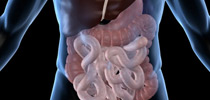 The Oriental concept of Ayurveda with its focus on balance and rejuvenation particularly focuses on the significance of the digestive system with regard to the overall balanced functioning of the human body. One of the basic tenets of Ayurveda enshrines the necessity of healthy digestive system as the prerequisite to overall healthiness of the human body and mind.
The Oriental concept of Ayurveda with its focus on balance and rejuvenation particularly focuses on the significance of the digestive system with regard to the overall balanced functioning of the human body. One of the basic tenets of Ayurveda enshrines the necessity of healthy digestive system as the prerequisite to overall healthiness of the human body and mind.
With its belief that digestive system influences the functioning of circulatory, nervous and skeletal system; the concept rests on the basic principle that weakness in digestive system makes way for corresponding weakness in other organic system. According to Ayurveda consumption of food which is inextricably linked with digestion and its subsequent functioning or malfunctioning, the cause of improper functioning of the digestive system lies in the improper eating habits. Improper or imbalanced indulgence of senses which gives way to wrong eating habits serves to upset the all important digestive structure. Unhealthy eating manners triggered by the wrong use of senses aid to upset the physiological balance. The treatment administered to overcome the symptoms of digestive disorders; includes both symptomatic and asymptomatic treatment seeking to eradicate the underlying cause.
Effective treatment are provided for Gastritis, Ulcer, Hyperacidity, Indigestion/Anorexia, Intestinal Infection, Constipation, Liver Dysfunction, Hepatitis/Jaundice and Piles.
 A happy and comfortable old age is the fruit of well-spent childhood, youth and middle age. However, old age brings along with it many nagging health problems like constipation, indigestion, sleeplessness, exhaustion, wrinkled skin, diminishing sensory faculties, etc. Ayurveda has a focused branch of medicine called Rasayana (Rejuvenation) which exclusively deals with the problems related to aging and methods to counter the same. Geriatrics or Jara cikitsa or Rasayana in Ayurveda is a method to control / slow down / arrest the aging process in the human being during the degenerative phase of one's life.
A happy and comfortable old age is the fruit of well-spent childhood, youth and middle age. However, old age brings along with it many nagging health problems like constipation, indigestion, sleeplessness, exhaustion, wrinkled skin, diminishing sensory faculties, etc. Ayurveda has a focused branch of medicine called Rasayana (Rejuvenation) which exclusively deals with the problems related to aging and methods to counter the same. Geriatrics or Jara cikitsa or Rasayana in Ayurveda is a method to control / slow down / arrest the aging process in the human being during the degenerative phase of one's life.
Rasayana is one among eight branches Ayurveda. Through Rasayana therapy, one can attain longevity, improved harmony, intelligence, freedom from disease, youthful vigor, complexion and voice, physical strength and good sensory functions. Rasayana therapy prevents various degenerative disease conditions; promote the health status of an individuals.
 MS is a chronic, progressive, degenerative disorder that affects nerve fibers in the brain and spinal cord characterized by intermittent damage to myelin - a fatty substance that surrounds and insulates nerve fibers and facilitates the conduction of nerve impulse transmissions - caused by the destruction of specialized cells (oligodendrocytes) that form the substance. Demyelination causes scarring and hardening (sclerosis) of nerve fibers usually in the spinal cord, brain stem, and optic nerves, which slows nerve impulses and results in weakness, numbness, pain, and vision loss. Because different nerves are affected at different times, MS symptoms often worsen (exacerbate), improve, and develop in different areas of the body. Early symptoms of the disorder may include vision changes (e.g., blurred vision, blind spots) and muscle weakness.
MS is a chronic, progressive, degenerative disorder that affects nerve fibers in the brain and spinal cord characterized by intermittent damage to myelin - a fatty substance that surrounds and insulates nerve fibers and facilitates the conduction of nerve impulse transmissions - caused by the destruction of specialized cells (oligodendrocytes) that form the substance. Demyelination causes scarring and hardening (sclerosis) of nerve fibers usually in the spinal cord, brain stem, and optic nerves, which slows nerve impulses and results in weakness, numbness, pain, and vision loss. Because different nerves are affected at different times, MS symptoms often worsen (exacerbate), improve, and develop in different areas of the body. Early symptoms of the disorder may include vision changes (e.g., blurred vision, blind spots) and muscle weakness.
In Ayurveda MS is treated with Langhana therapies to remove ama and dosha accumulation. If possible Ayurveda suggests using strong purifying methods (Shodhana) such as Pancha Karma to remove the dosha + ama deposits in the body. If this is not possible then Shamhana therapies can be used with the person over a long period of time. Shamhana therapies are preferable when the patient is too young, too old, too weak, too debilitated. Proper diet and regimen are also advised in addition to the prescription of nerve tonics, to restore the function of the nervous system.
 Vata is the main Dosha related to the Bones! There is a lot of Akash Mahabhuta (the ether) in form of the spaces and canals in the bones, and where space there is will be Vata Dosha in the body, because Vata Dosha is a result of Akash and Vayu Mahabhutas. So this is one thing.
Vata is the main Dosha related to the Bones! There is a lot of Akash Mahabhuta (the ether) in form of the spaces and canals in the bones, and where space there is will be Vata Dosha in the body, because Vata Dosha is a result of Akash and Vayu Mahabhutas. So this is one thing.
Generally as a principle in Ayurveda- when a resident Dosha increases it will directly increase the Dhatu where it is residing for example- when Pitta increases it will increase the Rakta. But in case of the Vata and Bones, it is opposite. Vata increases- bones keep on decaying. So the main cause of a condition like osteoporosis is the Vata increase. This Vata increase might be due to excessive use of the body and too much movement (as it happens in athletes) and it might be as simple as in old age (because by default old age is the period of Vata aggravation).
With joints it is bit different. Joints have a lot of movement so there should be too much Vata and problems should be due to the Vata only. But there is a lot of Kapha (Shleshak Kapha) in form of synovial fluid- which helps to balance Vata in joints because Kapha is quite opposite to the properties of the Vata. Once there will be decay in the synovial fluid in the joints- problems will be aggravated and Vata will cause severe damage. Osteoarthritis is the result of the same condition. These are not only osteophytes in the joints there will be lack of the synovial fluid too in the joints. So Ayurveda has a clear approach towards the treatment of the Bone and Joint problems. We need to maintain the balance the Kapha and Vata Dosha to maintain the harmony in the body. If one of these will be out of balance- there will be certainly some problems with the joints.
 The urinary tract is made up of the kidneys, ureters, bladder, and urethra. These organs work together to produce, transport, store, and excrete urine, the yellowish fluid that contains waste products removed from the blood. Urine contains the by-products of our body's metabolism, salts, toxins, and water. For instance, blood, protein, or white blood cells in the urine may indicate injury, infection, or inflammation of the kidneys. Glucose in the urine may be an indication of diabetes.
The urinary tract is made up of the kidneys, ureters, bladder, and urethra. These organs work together to produce, transport, store, and excrete urine, the yellowish fluid that contains waste products removed from the blood. Urine contains the by-products of our body's metabolism, salts, toxins, and water. For instance, blood, protein, or white blood cells in the urine may indicate injury, infection, or inflammation of the kidneys. Glucose in the urine may be an indication of diabetes.
Problems in the urinary system can be caused by ageing, illness, or injury. As you get older, changes in the kidneys' structure cause them to lose some of their ability to remove wastes from the blood. Also, the muscles in your ureters, bladder, and urethra tend to lose some of their strength. You may have more urinary infections because the bladder muscles do not tighten enough to empty your bladder completely. A decrease in strength of muscles of the sphincters and the pelvis can also cause incontinence, the unwanted leakage of urine. Illness or injury can also prevent the kidneys from filtering the blood completely or block the passage of urine.
We provide treatment for Burning urine , Hematuria, Nephritis, Bed wetting, Kidney Stones, Renal Stone, Urinary Tract Infections, Dysuria, Prostate Enlargement, Oedema, Prostatitis and Proteinuria.